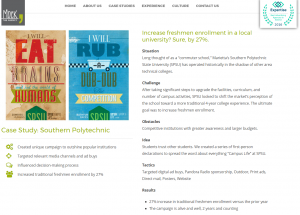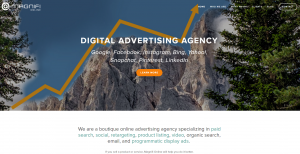There are a few reasons why agency executives decide to dedicate their time to volunteering in an industry association. One, they want to learn more about what their peers are doing to achieve success or two, they’re simply looking to expand their network and drive a few sales on the side. Regardless of your intentions, participating in different groups within your industry can provide tremendous benefits for your business. In this post, we’ve organized the top 5 marketing and advertising associations we think are worth investing your time in.
ANA
Brief Bio: The ANA (Association of National Advertisers) provides leadership that advances marketing excellence and shapes the future of the industry. Founded in 1910, the ANA’s membership includes more than 680 companies with 10,000 brands that collectively spend over $250 billion in marketing and advertising. The ANA also includes the Business Marketing Association (BMA) and the Brand Activation Association (BAA) which operate as divisions of the ANA, and the Advertising Educational Foundation which is an ANA subsidiary.
My Take: As one of the leading associations within the advertising and marketing industry, I highly recommend getting involved if you’re an agency executive. They host a large amount of conferences throughout the year, all highly relevant to agencies and companies. Since most of the members are corporate marketing executives, it’s a great opportunity to collaborate and network with some of the leading global brands.
Event Recommendation: The ANA has an impressive list of industry events each year however my personal recommendation is the Masters of Marketing Conference, held in October, which typically brings together top brand marketers around the world.
Mirren
Brief Bio: Working closely with agency CEOs and their management teams Mirren supports agencies with consulting and training regarding best practices in new business development. Through their membership you get access to their resource center which includes their Daily Leads, On-Demand Learning and Advanced Webinars.
My Take: Although Mirren isn’t technically an ‘association’ I wanted to include them on this list because Mirren is a household name for agencies, specifically those responsible for new business. Across events, on demand training and their new Mirren Talent platform agency professionals leverage Mirren to crank up their growth by staying on top of the cutting-edge best practices.
Event Recommendation: One of the go-to annual events for those responsible in driving agency new business, Mirren Live consistently brings together an impressive group of leading agencies and search consultants each year to learn about hot topics and growth drivers for successful agencies. A newer event they’ve recently added to their calendar, the CEO Summit, is also highly recommend. Note – only agency executives are allowed to attend this one.
4A’s
Brief Bio: Founded in 1917, the 4A’s is the national trade association representing the advertising agency business in the United States. As a management-oriented association, the 4A’s offers its members the broadest possible services, expertise and information regarding the advertising agency business. Its membership produces approximately 80 percent of the total advertising volume placed by agencies nationwide. Although virtually all of the large, multinational agencies are members of the 4A’s, more than 60 percent of our membership bills less than $10 million per year.
My Take: In my opinion, the 4A’s is the ‘mother organization’ of agencies, and is a great fit for agencies of all types and sizes. They offer valuable training, conferences, and best practices in how to drive agency sales, profits and develop new business.
Event Recommendation: In addition to national events such as the Transformation Conference, they also offer Regional Forums for small to mid-size agency principals to discuss business issues and challenges that they all face.
Marketing Research Association
Brief Bio: Founded in 1957 and based in Washington, the Marketing Research Association is the leading and largest U.S. association of the opinion and marketing research profession, which delivers insights and strategies to help guide the decisions of companies providing products and services to consumers and businesses.
My Take: The MRA – still a common moniker, despite the different connotations of that acronym these days – has a bit more wide-reaching content designed for easy consumption. You’ll find videos and case studies on particular trends, as well as frequent editorials on the latest marketing news. But underneath this sort of aggregation is a solid foundation of research and marketing communities available to those who take the next step. Membership is divided in multiple levels, but again the focus is primarily on research and data as opposed to more social aspects of marketing.
IAB
Brief Bio: IAB serves as digital media’s biggest tent, comprised of more than 650 leading media and technology companies that are responsible for selling, delivering, and optimizing digital advertising or marketing campaigns. Working with its member companies, IAB develops technical standards and best practices and fields critical research on interactive advertising, while educating brands, agencies, and the wider business community on the importance of digital marketing.
My Take: Like the MRA, the IAB is a polished and news-friendly association that covers a broad number of topics across the marketing and advertising space. They provide many tools and classes for free without requiring membership or certification which is always a plus. This includes fee calculators, ad viewability guides, and much more. Certification is divided into several different specialties and levels of expertise, allow you to customize your training based on your position and goals.
Event recommendation: Like others, IAB has a large list of trainings, webinars and conferences. My preferences would by the IAB MIXX, typically held later in the year in NY.












